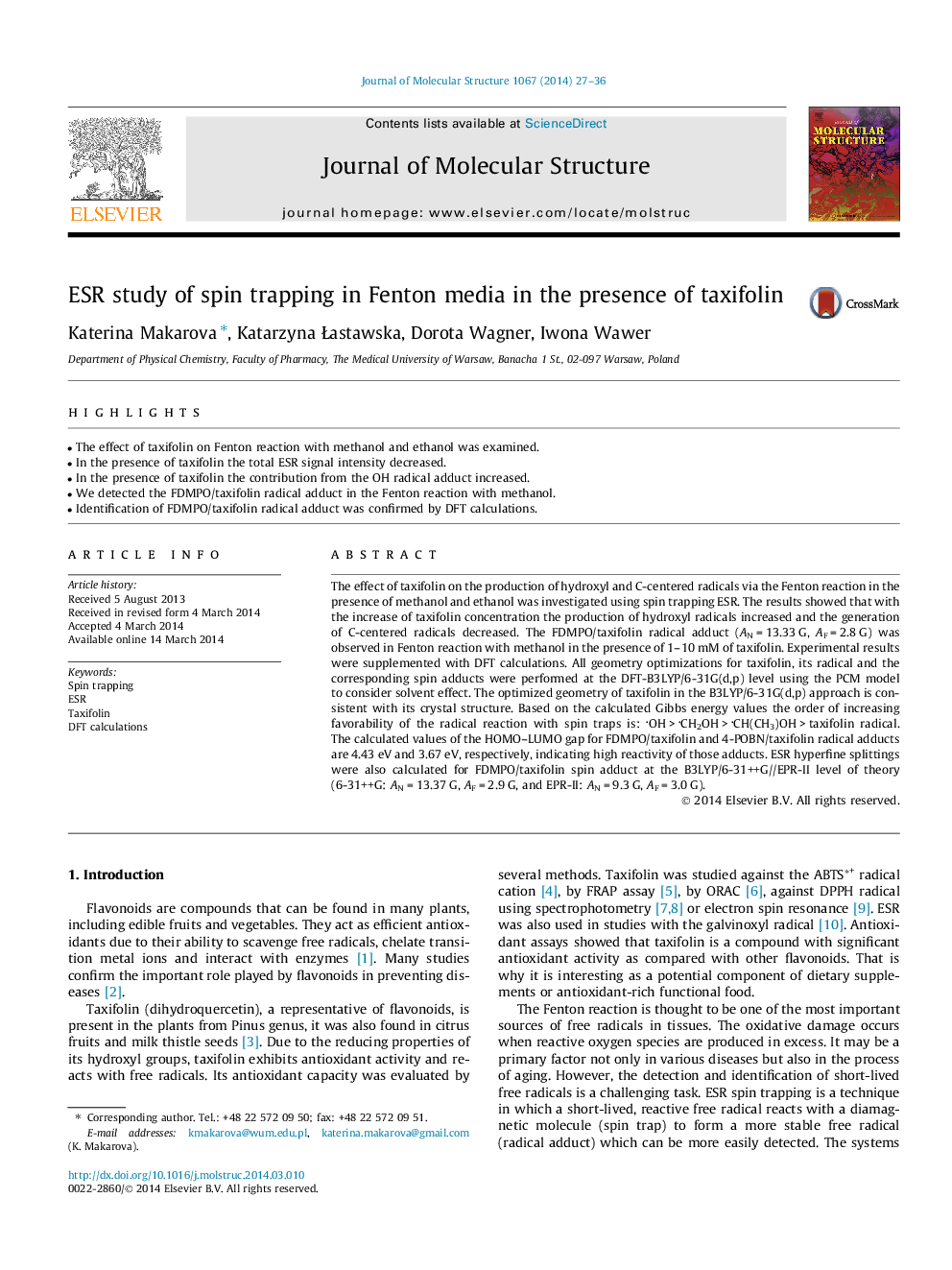| Article ID | Journal | Published Year | Pages | File Type |
|---|---|---|---|---|
| 1405198 | Journal of Molecular Structure | 2014 | 10 Pages |
•The effect of taxifolin on Fenton reaction with methanol and ethanol was examined.•In the presence of taxifolin the total ESR signal intensity decreased.•In the presence of taxifolin the contribution from the OH radical adduct increased.•We detected the FDMPO/taxifolin radical adduct in the Fenton reaction with methanol.•Identification of FDMPO/taxifolin radical adduct was confirmed by DFT calculations.
The effect of taxifolin on the production of hydroxyl and C-centered radicals via the Fenton reaction in the presence of methanol and ethanol was investigated using spin trapping ESR. The results showed that with the increase of taxifolin concentration the production of hydroxyl radicals increased and the generation of C-centered radicals decreased. The FDMPO/taxifolin radical adduct (AN = 13.33 G, AF = 2.8 G) was observed in Fenton reaction with methanol in the presence of 1–10 mM of taxifolin. Experimental results were supplemented with DFT calculations. All geometry optimizations for taxifolin, its radical and the corresponding spin adducts were performed at the DFT-B3LYP/6-31G(d,p) level using the PCM model to consider solvent effect. The optimized geometry of taxifolin in the B3LYP/6-31G(d,p) approach is consistent with its crystal structure. Based on the calculated Gibbs energy values the order of increasing favorability of the radical reaction with spin traps is: OH > CH2OH > CH(CH3)OH > taxifolin radical. The calculated values of the HOMO–LUMO gap for FDMPO/taxifolin and 4-POBN/taxifolin radical adducts are 4.43 eV and 3.67 eV, respectively, indicating high reactivity of those adducts. ESR hyperfine splittings were also calculated for FDMPO/taxifolin spin adduct at the B3LYP/6-31++G//EPR-II level of theory (6-31++G: AN = 13.37 G, AF = 2.9 G, and EPR-II: AN = 9.3 G, AF = 3.0 G).
